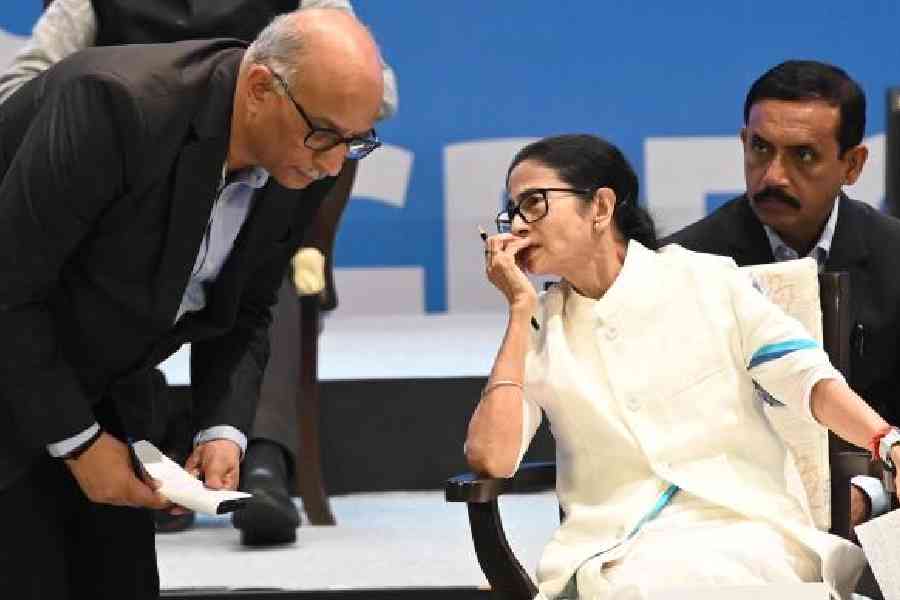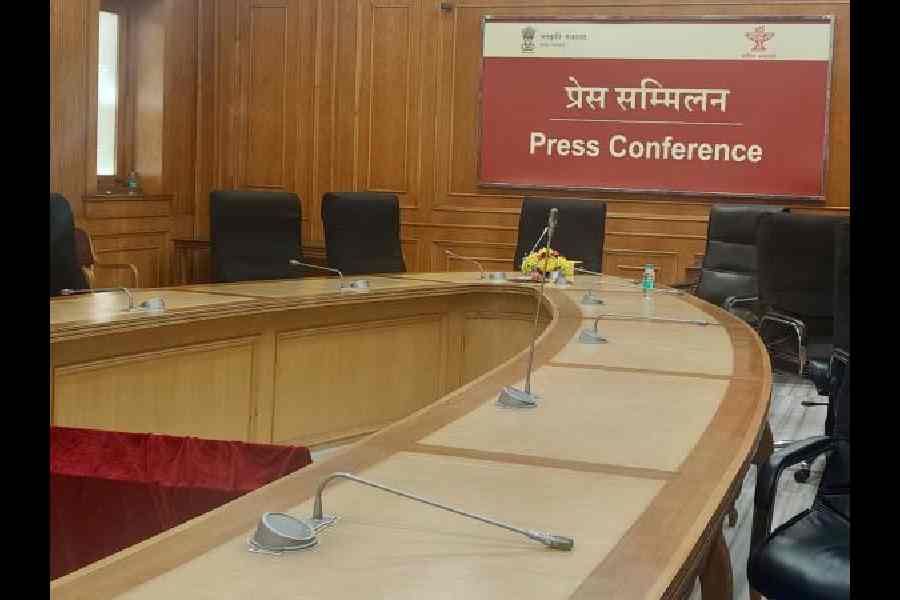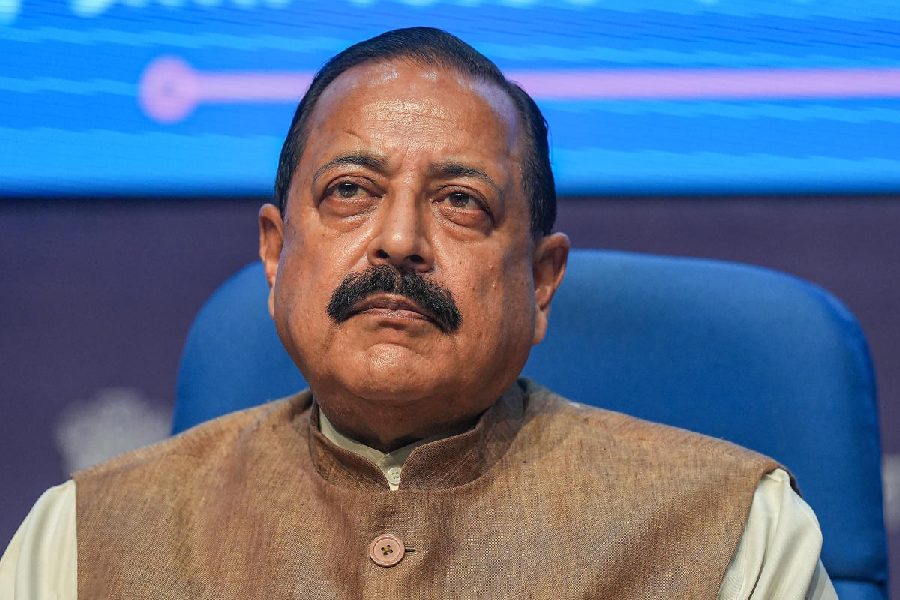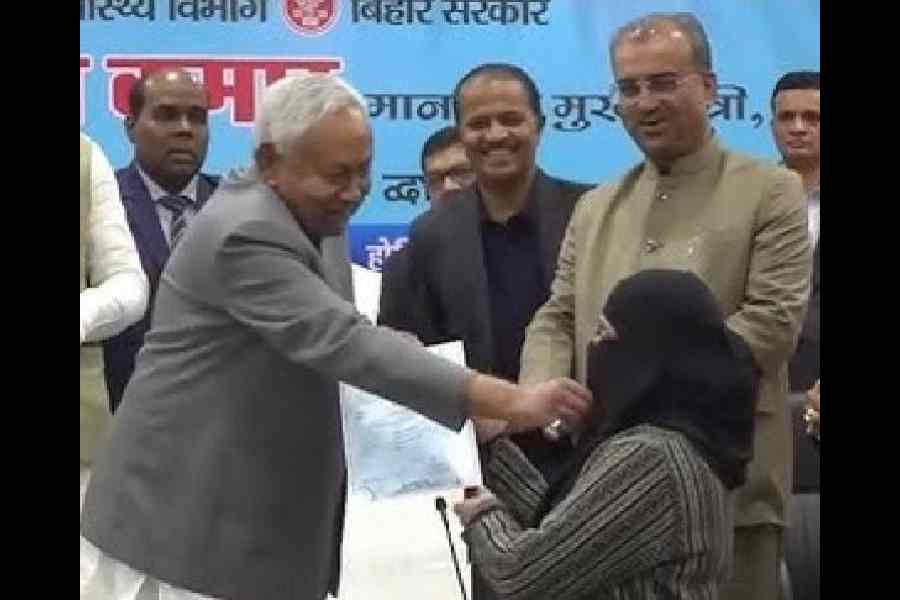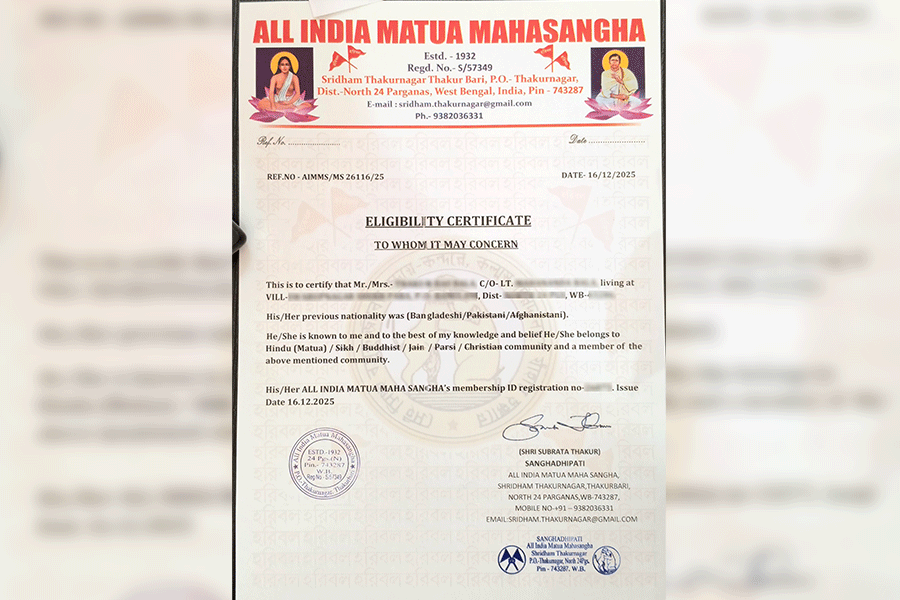 |
Jaran Wala Gali (Surankote), May 23: Snow still shrouds the heights of the Pir Panjal like a white blanket but this is the mid-summer of a military campaign. Between here, an army operations command centre overlooking the town of Surankote, and the Pir Panjal — the wall of mountain that separates the Kashmir Valley from the south of the state — is the arena for the Indian Army’s own “Operation Shock and Awe Redux”.
The man in charge of the 100 sq km battlefield is a straight-talking officer with a dislike for armchair strategists. Major General Hardev Lidder, chief of the army’s counter insurgency “Romeo Force”, sports the maroon beret favoured by commandos the world over and an ugly black pistol on his hip holster.
In Delhi, at the ministry of defence, the army chief has said the military campaign codenamed “Operation Sarp Vinash” is all but over. In Delhi, strategists say militants are on the run because of a clinical operation that destroyed hastily set up militant camps around Hill Kaka, the largest village in the hills around here and that the area has been sanitised.
But here, on a guided tour by the army itself, the first indication that all of this is suspect is from Indian Air Force helicopter pilots who ask army officers if they face a risk from RPG-7s or Stingers fired from below.
Lidder shows photographs of fortified militant bunkers and sangars, he says his troops found cement and concrete structures, and dugouts reinforced with stone and mortar. That he had to use a helicopter and fire rockets into a bunker at 3,269 metres (about 10,000 feet), that his troops were battling not only well-equipped militants but also fighting against the elements. Even now, the general says, the troops have been through just about 30 to 40 per cent of the hills and valleys.
“Operation Sarp Vinash” was the brainchild of Lidder but had the green signal from the Central and state governments. “I called it Sarp Vinash (kill the snake) because these guerrilla elements can be slimy characters and dig themselves in and we were out to destroy them. We did that with long-term planning and when we finally moved in we achieved shock and awe. They crumbled in one night on April 21 in which they lost 13 men,” he says.
The sheer heights and the uphill task for the army have led some to draw a simplistic parallel with the Kargil operations. The fact is, this operation is far from being Kargil II and, in some ways for the army, an indicator that it might have been more dangerous.
The Hill Kaka area is not along the Line of Control. As the crow flies, the closest point on the Line of Control from here is at Poonch, 12 km away. Between this region and the LoC, there is a tier of the army’s defences. The militant bases, officers point out, were behind army lines. In the event of an offensive, they might have interdicted the army’s logistics. Unlike the intruders in Kargil, they were not capturing territory.
The battlefield for Operation Sarp Vinash (see graphic) is roughly a triangle bounded by three major ridges — the Wansi, the Ranjati and the Said Baker, all emanating from the Pir Panjal or its spurs.
The village of Hill Kaka, which was occupied by a population of roughly 6,000 migratory Bakarwals in summer, was the main base.
After the army stormed it, they claimed to have found close to 7,000 kg of rations and an arsenal that comprises automatic weapons, rocket launchers, grenades and machine guns, indicating that the occupants had not only prepared for long but were also prepared for long.
Lidder’s Romeo Force went on the offensive in the region mainly from the south and west without being able to totally encircle it because of the difficult terrain.
Acting in consort was the Victor Force that interdicted and is said to have killed 20 militants immediately on the other side to the north of the Pir Panjal. The total casualties number 62 for the militants and two for the army. (The Victor and Romeo Forces are divisions of the Rashtriya Rifles and are manned by the army.)
By all accounts, the total number of army troops involved may have been more than 15,000 — the order of battle is a secret — making “Operation Sarp Vinash” the largest single counter-insurgency operation in Kashmir in a long time.
Though the heat of the operation was from April 20 to May 18, Lidder himself said the planning was on since last year. The elaborate planning involved building three helipads at heights between 10,000 and 11,000 feet in the first phase, establishing a firm base in the second phase and “shock and awe” in the third phase.
The third phase began with a combing operation along the Chhan Nala that flows just below Hill Kaka.
“It is clear the militants had established the base over a period of time but this is not capturing territory, it is following Mao Tse Tung’s lessons in guerrilla warfare from which they have learnt to establish mobile bases in places where civil or military administration is practically not present,” says Lidder. “The town of Surankote must have been integral to their plans.”
Surankote is still a hotbed of militant activity. In the elections last year, state Congress chief Ghulam Nabi Azad’s helicopter had to hover about the town because of firing from the ground.
Lidder says the state government arranged for a compensation of Rs 7.5 crore for the Bakarwals who were asked to stay away from the area.
“The strategy is to drive the terrorists away from secure bases and into towns and populated centres where intelligence is available and where we can keep them running,” he explained. The Hill Kaka base was used by most tanzeems (groups) from militant outfits like the Lashkar-e-Toiba, the Harkat-ul Mujahideen and the Jaish-e-Mohammad.
“The operation is far from over. Such operations continue. This just shows there is the possibility that the terrorists may have or may try to establish such bases elsewhere, anywhere,” Lidder warns.


